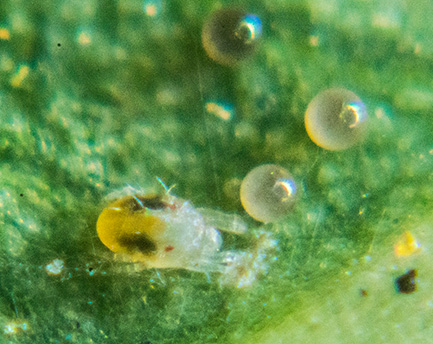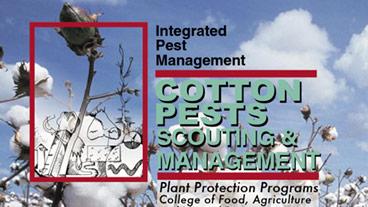
Two-spotted spider mites (Tetranychus urticae) have eight legs. Mites are in the same order with spiders and ticks. Adult insects have six legs. Spider mites can be yellow, green, brown, or orange in color. They have two dark spots on the back. These spots are actually ingested food seen through the clear integument.
They multiply rapidly. Few creatures can match the reproductive rates of mites. Females lay about five eggs each day. In temperatures about 75 degrees Fahrenheit. the eggs hatch in three days. Their life cycle takes only a week to complete from egg to adult.
Mites infest the undersides of cotton leaves where the lobes are closest to the petiole. Splotches of brown tissue appear on the leaf surface. When turned over, the webbing (silk) can be seen. Mites can be seen moving in the webbing with the naked eye. A hand lens is needed to see how many there really are on the leaf. The eggs look like tiny clear glass spheres that can only be seen with a lens. The young mites can only be seen with a lens as well. The webbing is obvious.
There is no complete control of mites. There are several good miticides on the market. It is best that the spay be directed under the leaves. This can be done with drop nozzles. The prop wash of an airplane will do a good job if enough water is used per acre. Damage from mites feeding causes fruit to shed. Mites are capable of causing defoliation that kills the plant prematurely before fruit develops. The damage is more common in hot weather.
